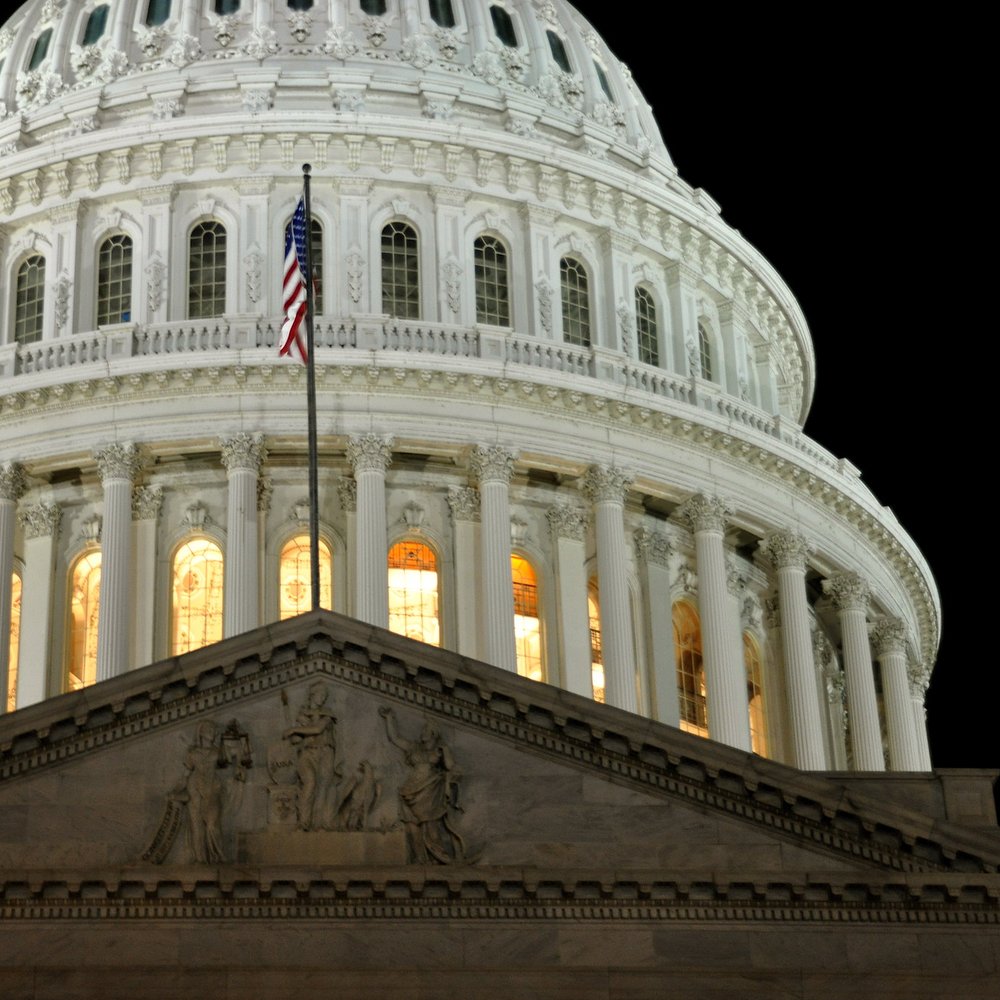China, Japan, India Drive Sustainable Growth in the Community-Based Tourism Market, With a Projected 14.1% CAGR – Travel And Tour World

Report on the Global Community-Based Tourism Market and its Contribution to Sustainable Development Goals
Executive Summary
The global Community-Based Tourism (CBT) market is projected to achieve a valuation of USD 2136.8 billion by 2032, expanding at a Compound Annual Growth Rate (CAGR) of 14.1%. This growth is intrinsically linked to a global shift towards sustainable and ethical travel, aligning directly with the United Nations’ Sustainable Development Goals (SDGs). This report analyzes the market dynamics, key drivers, and regional trends, with a significant emphasis on how CBT serves as a vehicle for achieving specific SDGs, including SDG 1 (No Poverty), SDG 8 (Decent Work and Economic Growth), SDG 11 (Sustainable Cities and Communities), and SDG 12 (Responsible Consumption and Production).
Core Principles of Community-Based Tourism and SDG Alignment
Community-Based Tourism is a model where local communities have full or substantial ownership and management of tourism enterprises. Its operational framework is founded on principles that directly support the 2030 Agenda for Sustainable Development.
Key Contributions to Sustainable Development Goals:
- SDG 1 (No Poverty) & SDG 10 (Reduced Inequalities): CBT ensures that tourism revenue is retained locally, providing direct income streams to community members and creating a mechanism for poverty alleviation and more equitable wealth distribution.
- SDG 8 (Decent Work and Economic Growth): The model fosters inclusive and sustainable economic growth by creating local employment opportunities, promoting local entrepreneurship, and ensuring fair wages and working conditions.
- SDG 11 (Sustainable Cities and Communities): A central tenet of CBT is the safeguarding of cultural and natural heritage. It empowers communities to preserve their traditions, architecture, and local identity for future generations.
- SDG 12 (Responsible Consumption and Production) & SDG 15 (Life on Land): CBT promotes sustainable tourism practices, including eco-tourism, waste reduction, and the conservation of biodiversity and natural ecosystems, mitigating the negative environmental impacts of mass tourism.
Market Growth Drivers and Demographic Analysis
Primary Market Drivers
- Demand for Authentic Experiences: Modern travelers, particularly younger demographics, are increasingly seeking meaningful and immersive cultural exchanges over conventional tourism.
- Growing Sustainability Consciousness: There is heightened awareness of the social and environmental impacts of travel, leading consumers to choose options that contribute positively to host communities and align with responsible consumption (SDG 12).
- Generational Shift: The preferences of Millennials and Generation Z are fundamentally reshaping the tourism landscape.
Analysis by Age Demographic
- Generation Y (Millennials): This segment constitutes the largest market share. Their preference for experiential travel that offers cultural immersion and supports local economies is a primary catalyst for CBT growth, reflecting a commitment to principles outlined in SDG 8 and SDG 11.
- Generation Z: As the fastest-growing demographic, this group exhibits a strong inclination towards eco-conscious and socially responsible travel, actively seeking tourism that contributes to environmental conservation (SDG 15) and community development.
Market Segmentation Report
Traveler Type
- Group Travel: This segment holds the largest market share, offering cost-effective and structured opportunities for travelers to engage with local communities while ensuring that economic benefits are distributed among various local service providers.
- Solo Travel: A rapidly growing segment, solo travelers often seek deeper connections and authentic interactions, directly supporting local guides, homestays, and artisans, thereby advancing SDG 1 and SDG 8.
Sales Channel
- Travel Agents: Currently dominating the market, specialized travel agents curate bespoke CBT experiences that guarantee adherence to sustainability standards and facilitate meaningful community engagement.
- Direct Bookings: The online direct booking channel is experiencing rapid growth, empowering travelers to connect directly with community-run enterprises and ensuring a larger portion of the expenditure remains within the local economy.
Regional Market Analysis and SDG Impact
Asia-Pacific: The Dominant Market
The Asia-Pacific region leads the CBT market, driven by its rich cultural diversity and developing tourism infrastructure. Countries such as China, Japan, and India are pivotal to this growth.
- Economic and Social Impact: In nations like Thailand, Vietnam, and Indonesia, CBT initiatives such as homestays and community-led eco-tours are instrumental in providing decent work (SDG 8) and preserving cultural heritage (SDG 11).
- Sustainable Growth: The rise in disposable income in the region is being channeled towards sustainable tourism models that empower local communities and protect environmental assets, contributing to SDG 12.
North America: The Fastest-Growing Market
North America is emerging as the fastest-growing region for CBT, fueled by a strong consumer demand for ethical, sustainable, and culturally rich travel.
- Alignment with Global Goals: The growth is driven by heightened awareness among travelers in the United States and Canada regarding the environmental impact of tourism and a desire to support responsible consumption patterns (SDG 12).
- Focus on Conservation: The trend towards wellness and eco-tourism in natural settings directly supports the conservation of local ecosystems and biodiversity (SDG 15).
Conclusion: The Future of Sustainable Tourism
The robust growth trajectory of the Community-Based Tourism market underscores a fundamental shift in global travel preferences towards sustainability, responsibility, and authenticity. The market’s future success is inextricably linked to its proven ability to advance the Sustainable Development Goals. By empowering local communities, fostering inclusive economic growth (SDG 8), preserving cultural and natural heritage (SDG 11, SDG 15), and promoting responsible consumption (SDG 12), CBT presents a viable and scalable model for the future of global tourism. Key industry players, including G Adventures and Intrepid Travel, continue to play a crucial role in promoting these sustainable practices through partnerships for the goals (SDG 17).
Analysis of Sustainable Development Goals in the Article
1. Which SDGs are addressed or connected to the issues highlighted in the article?
-
SDG 1: No Poverty
The article connects community-based tourism (CBT) directly to poverty alleviation, stating that it “serves as a tool for poverty alleviation and community development.” By ensuring economic benefits stay within the local community, CBT contributes to reducing poverty at the local level.
-
SDG 8: Decent Work and Economic Growth
This is a central theme. The article highlights the “robust growth” of the CBT market, its potential valuation of “USD 2136.8 billion by 2032,” and its role in “economic development” for communities. It emphasizes creating economic benefits that are locally retained, which supports sustainable economic growth.
-
SDG 10: Reduced Inequalities
CBT is presented as a model that “empowers local communities by involving them in the tourism process,” including “decision-making to planning and managing.” This focus on local empowerment and ensuring benefits are “more equally distributed” directly addresses the goal of reducing inequalities.
-
SDG 11: Sustainable Cities and Communities
The article emphasizes CBT’s role in “preserving heritage and traditions” and “cultural preservation.” It states that by supporting community-driven tourism, regions can “preserve their cultural heritage and protect their traditional ways of life,” which is a key aspect of making communities sustainable.
-
SDG 12: Responsible Consumption and Production
The entire concept of CBT discussed in the article is a form of sustainable tourism, which aligns with this goal. The text notes a surge in demand for “sustainable tourism,” “eco-conscious travel,” and “socially responsible practices,” reflecting a shift towards more responsible consumption patterns among travelers (Millennials and Gen Z).
-
SDG 15: Life on Land
The article links CBT to environmental protection, mentioning that it helps in the “preservation of natural environments” and promotes “eco-tourism.” It highlights that many CBT programs focus on “encouraging sustainable practices that reduce the negative impact of tourism on the environment,” contributing to the conservation of terrestrial ecosystems.
2. What specific targets under those SDGs can be identified based on the article’s content?
-
Target 1.2: Reduce at least by half the proportion of men, women and children of all ages living in poverty.
The article’s statement that CBT serves as a “tool for poverty alleviation” implies a direct effort to reduce poverty within participating communities, aligning with this target.
-
Target 8.9: By 2030, devise and implement policies to promote sustainable tourism that creates jobs and promotes local culture and products.
This target is directly addressed. The article describes CBT as a model for “sustainable tourism” that fosters “economic development,” promotes “local cultures,” and ensures that “economic benefits stay within the community.”
-
Target 10.2: By 2030, empower and promote the social, economic and political inclusion of all.
The article’s emphasis on “local involvement” in “decision-making, planning, and managing tourism activities” directly reflects the goal of empowering communities and promoting their inclusion in economic processes.
-
Target 11.4: Strengthen efforts to protect and safeguard the world’s cultural and natural heritage.
The article explicitly states that CBT supports “cultural preservation” and helps communities “preserve their cultural heritage and protect their traditional ways of life,” which is the core of this target.
-
Target 12.b: Develop and implement tools to monitor sustainable development impacts for sustainable tourism.
The article discusses the growth of “sustainable tourism” and “eco-conscious travel” as a market trend. The entire CBT model is a practical implementation of sustainable tourism, and its market growth analysis (e.g., the Allied Market Research report) serves as a form of monitoring its economic impact.
-
Target 15.1: Ensure the conservation, restoration and sustainable use of terrestrial and inland freshwater ecosystems.
The focus on “environmental preservation,” “eco-tourism,” and reducing the “negative impact of tourism on the environment” shows a clear link to conserving natural environments as part of the tourism experience.
3. Are there any indicators mentioned or implied in the article that can be used to measure progress towards the identified targets?
-
Indicator for Target 8.9: Tourism direct GDP as a proportion of total GDP and in growth rate.
The article provides specific financial data that can serve as a proxy for this indicator. It mentions the projected market valuation (“USD 2136.8 billion by 2032”) and the projected Compound Annual Growth Rate (“14.1% CAGR”), which directly measure the economic growth of the sustainable tourism sector.
-
Indicator for Target 10.2: Proportion of people who believe they have a say in decisions.
While not providing a quantitative measure, the article implies this through its definition of CBT, where “local involvement is at the core,” covering “decision-making to planning and managing.” The success of a CBT initiative could be measured by the level of active community participation in these areas.
-
Indicator for Target 11.4: Total expenditure per capita spent on the preservation, protection and conservation of all cultural and natural heritage.
The article implies this indicator by stating that CBT helps ensure “a larger portion of the tourism revenue” is kept “locally.” This locally retained revenue can then be reinvested into preserving cultural and natural assets. The proportion of tourism revenue allocated to heritage preservation would be a direct measure.
-
Indicator for Target 12.b: Number of sustainable tourism strategies or policies and implemented action plans.
The article implies this by highlighting the existence and success of various CBT initiatives and companies (G Adventures, Intrepid Travel, Local Alike) that specialize in this model. The number of such businesses and community-led tourism plans in regions like Asia-Pacific and North America serves as an indicator of implemented sustainable tourism strategies.
4. SDGs, Targets, and Indicators Table
| SDGs | Targets | Indicators |
|---|---|---|
| SDG 1: No Poverty | 1.2: Reduce poverty in all its dimensions. | Implied: Reduction in poverty rates in communities engaged in CBT, as it is described as a “tool for poverty alleviation.” |
| SDG 8: Decent Work and Economic Growth | 8.9: Promote sustainable tourism that creates jobs and promotes local culture. | Mentioned: Market valuation growth (projected to reach USD 2136.8 billion by 2032) and a projected 14.1% CAGR for the CBT market. |
| SDG 10: Reduced Inequalities | 10.2: Empower and promote the social, economic, and political inclusion of all. | Implied: Level of local community involvement in “decision-making, planning, and managing” tourism activities. |
| SDG 11: Sustainable Cities and Communities | 11.4: Strengthen efforts to protect and safeguard the world’s cultural and natural heritage. | Implied: Proportion of tourism revenue retained locally and reinvested in the preservation of “cultural heritage” and “local traditions.” |
| SDG 12: Responsible Consumption and Production | 12.b: Develop and implement tools to monitor sustainable development impacts for sustainable tourism. | Implied: The number of CBT initiatives and specialized tour operators (e.g., G Adventures, Intrepid Travel) as a measure of implemented sustainable tourism strategies. |
| SDG 15: Life on Land | 15.1: Ensure the conservation and sustainable use of terrestrial ecosystems. | Implied: Number of CBT programs focused on “eco-tourism” and “environmental preservation” that reduce the negative environmental impact of tourism. |
Source: travelandtourworld.com
What is Your Reaction?
 Like
0
Like
0
 Dislike
0
Dislike
0
 Love
0
Love
0
 Funny
0
Funny
0
 Angry
0
Angry
0
 Sad
0
Sad
0
 Wow
0
Wow
0















































































